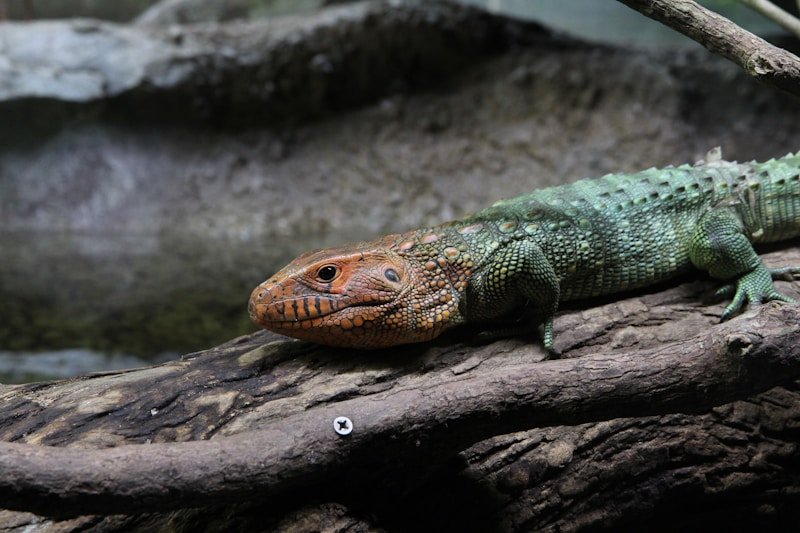Reptiles, a diverse and ancient group of animals, play vital roles in maintaining ecological balance. From controlling insect populations to acting as prey for larger predators, they are essential to many ecosystems. Unfortunately, a significant number of reptile species are now facing the threat of extinction. Habitat loss, climate change, pollution, and illegal trade are some of the key factors contributing to the endangerment of reptiles worldwide. The conservation of these species presents several challenges, but understanding these issues is the first step in developing effective strategies for their protection.
1. Habitat Loss and Fragmentation
The primary driver of reptile endangerment is habitat loss, often resulting from human activities such as deforestation, urbanization, and agricultural expansion. As forests, wetlands, and grasslands are cleared to make way for buildings or crops, reptiles lose their natural homes. Many species are highly specialized and require specific types of environments to survive. For example, the green sea turtle relies on coastal beaches for nesting, while the critically endangered Gharial crocodile requires clean river ecosystems for its survival.
Habitat fragmentation—where large, continuous habitats are broken up into smaller, isolated patches—also poses a major threat. Reptiles, which typically have small home ranges or specific environmental needs, struggle to survive in fragmented habitats. Isolated populations may face inbreeding, reduced genetic diversity, and difficulty accessing resources such as food and mates, all of which make survival increasingly difficult.
2. Climate Changes and Temperature Sensitivity
Reptiles are ectothermic, meaning they rely on external sources of heat to regulate their body temperature. This makes them particularly vulnerable to the effects of climate change. As global temperatures rise, many reptiles are finding it harder to adapt to the shifting climate. Changes in temperature can affect breeding cycles, feeding habits, and overall survival.
For instance, certain species of turtles depend on the temperature of their nests to determine the sex of their offspring. A slight increase in temperature could skew the sex ratio, potentially leading to a lack of males or females in the population, which in turn could threaten the survival of the species. Similarly, temperature fluctuations can disrupt the hibernation cycles of reptiles like snakes and lizards, affecting their ability to gather food and reproduce.
3. The Illegal Wildlife Trade
The illegal wildlife trade is another significant threat to reptile populations, with reptiles like turtles, snakes, and lizards often targeted for their skins, shells, or as exotic pets. Demand for these creatures in international markets has led to the decimation of populations, particularly in regions with high biodiversity.
Many reptiles are also captured for medicinal purposes, as their body parts are believed to have healing properties in some cultures. Despite laws aimed at protecting endangered species, poaching remains a major issue. In some cases, entire populations of reptiles have been wiped out in the wild to satisfy the demand for their illegal trade. For example, the Indian star tortoise has seen significant declines due to the pet trade, and some species of crocodile are hunted for their valuable hides.
4. Pollution and its Effects on Reptile Species
Pollution is another growing concern for reptile conservation. Pesticides, oil spills, and plastic waste are just a few of the pollutants that impact reptile populations. Turtles, for instance, often ingest plastic waste floating in the oceans, mistaking it for food. This can lead to starvation, malnutrition, or internal injuries. Similarly, chemical pollutants in the water can affect the reproductive health of amphibious reptiles, causing deformities or reducing hatchling survival rates.
The destruction of critical habitats due to pollution can also create toxic environments where reptiles struggle to survive. River and lake pollution can reduce the availability of clean water sources, and the accumulation of heavy metals in the soil or water can poison reptiles that rely on these ecosystems for sustenance.
Conservation Efforts and the Road Ahead
Despite these challenges, there are ongoing efforts to conserve endangered reptiles and protect their habitats. National parks, wildlife reserves, and protected areas are critical in providing safe spaces for reptile populations to thrive. Conservation organizations are also working to raise awareness about the importance of reptiles in maintaining biodiversity and ecosystem health.
In addition, scientific research is increasingly focused on understanding the behavior, ecology, and needs of endangered reptiles, which helps to inform conservation strategies. For example, the use of artificial incubation and head-starting programs has been successful in increasing hatchling survival rates for certain turtle species. Similarly, the restoration of degraded habitats and the reintroduction of species into the wild are critical steps in species recovery.
Ultimately, the success of reptile conservation depends on global collaboration. Governments, conservation groups, and local communities must work together to reduce habitat destruction, combat climate change, and regulate the illegal wildlife trade. By protecting reptiles, we protect the ecosystems they inhabit, ensuring the survival of many other species in the process.
In conclusion, while the conservation of endangered reptile species presents numerous challenges, it is far from impossible. With continued effort, awareness, and innovation, we can safeguard these fascinating creatures for future generations to appreciate and admire.

